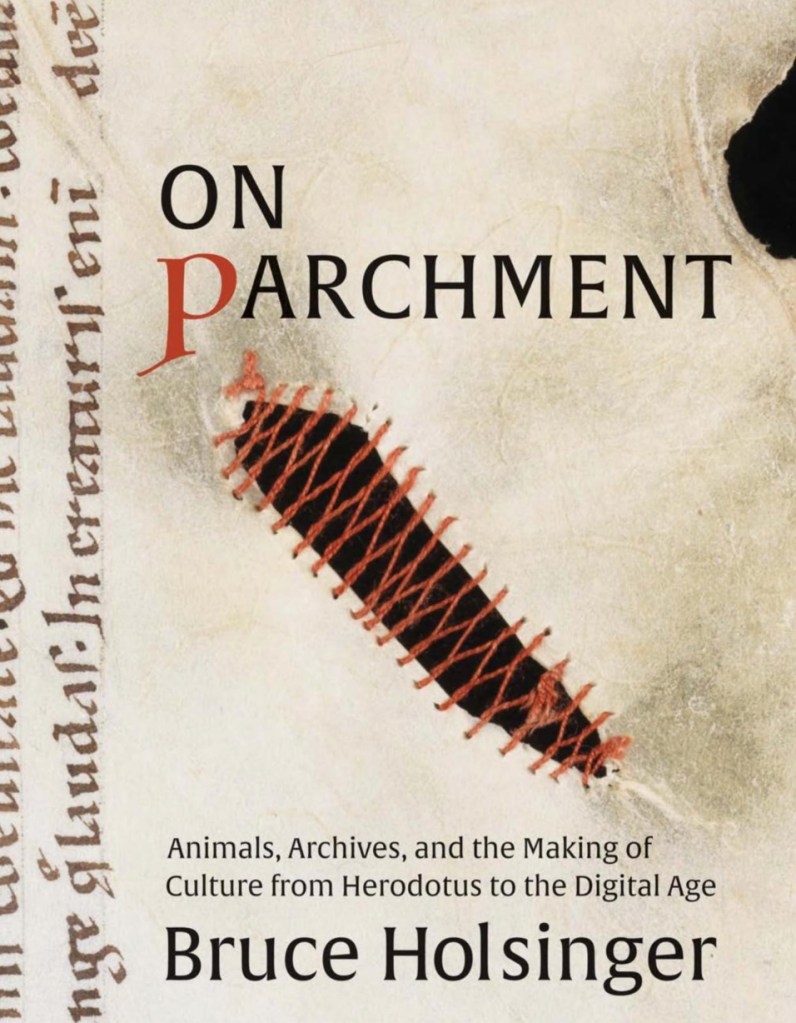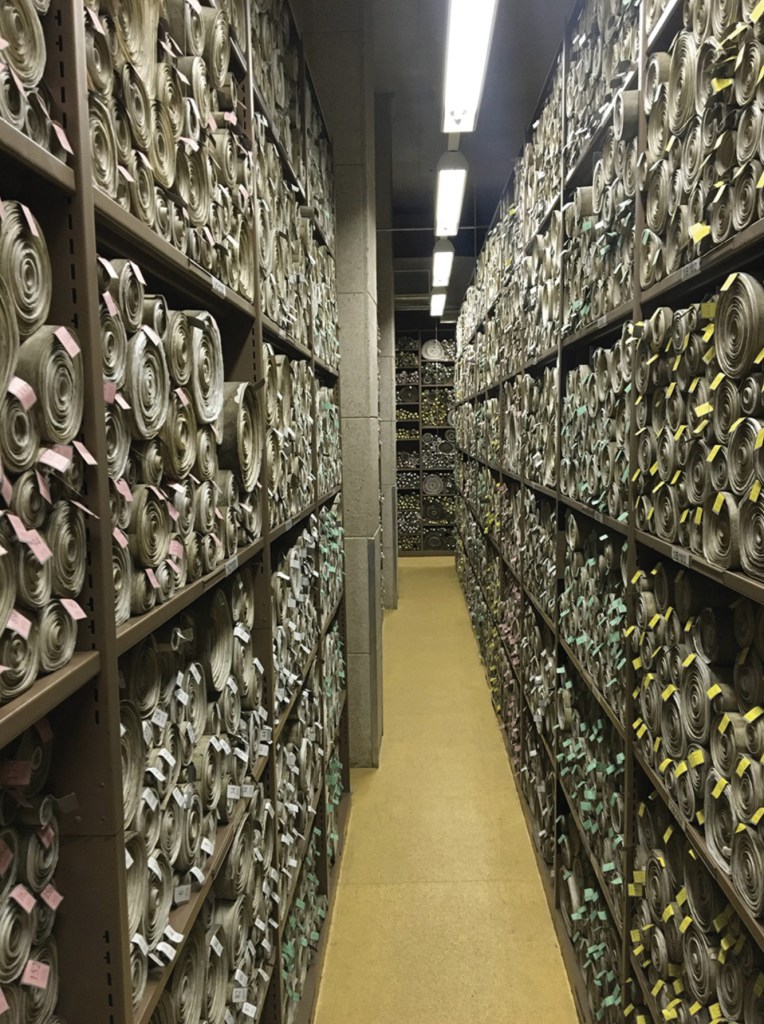
I have papyrus rolls on my mind right now, but I’m also interested in parchment rolls. I’ve been reading an excellent new book by Bruce Holsinger, On Parchment: Animals, Archives, and the Making of Culture from Herodotus to the Digital Age (Yale University Press, 2023). There are loads of interesting observations in the book and many, many striking images (from a production standpoint, YUP did a superb job on this book). One image that really resonated was a picture from the Parliamentary Archives in Westminster. Until 2017, Acts of Parliament had to be recorded on parchment scrolls. This large production of rolls has of course led to a need for large scale storage of rolls. Lots and lots of rolls. What does that look like?

Seeing the endless shelves of rolls, each with their index tag for identification hanging out makes me wonder if this is how we ought to imagine the larger library spaces of Roman antiquity. And of course the picture also immediately brings to mind the drawing of the lost relief from Trier showing a man working with rolls on a shelf:

I have not yet finished reading Holsinger’s book, but I can definitely recommend it already for those who are interested in the materiality of manuscripts and book history.


Greetings, Two Variant Readings in just a few short days! What delight! I know these are work to put together. I do so enjoy them. I was doing a demo in Martin Antonetti’s class at UVA’s Rare Book School and he was thrilled when I referenced your Variant Readings from June (I believe it was) where you describe how there is the hint of a possibility that the codex structure may be a few centuries earlier than previously thought. I feel pretty certain that referencing your blogs during my demo at UVA got me invited back next year to repeat my Rare Book School demo! Thank you!
Jill Deiss, Bookbinder [ctrwname.jpg] [www.cattailrun.com] 2160 Cedar Grove Road Winchester, Virginia 22603 10 a.m. – 5 p.m. Monday –
Thursday (540) 662-2683 [tel:540-662-2683]
L. C. Hector in Palaeography and Forgery (1959) 16-18 related a tale of a Tower parchment. “On one famous medieval occasion…the forger’s object had not been to forestall criticism but to make it his ally.” In a disputed inheritance case, simplified here, a document kept in the Tower of London proved person A was entitled. But an ally of competing person B managed (by his status) to go to the document in the Tower that certified the heir as xl (40) and more years old, and so the true heir. The forger scraped off “xl” and wrote–in a different hand and with smudged ink–*also* “xl” in an (eventually failed) attempt to lead others to believe that the original erased number was different and did not certify the claim.
Pingback: January 2024 Biblical Studies Carnival – Pursuing Veritas